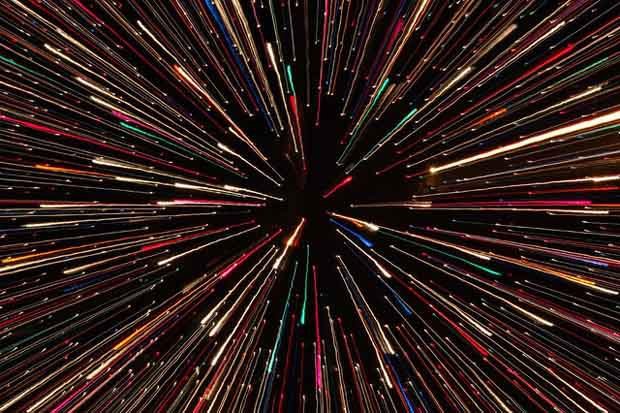If we were to explain the expansion of say, a balloon or a bubble, we could do so it in simple terms. A balloon expands into the space around it and occupies a larger space than before, just like a bubble that grows around the surface of water. But what do we mean when we say that space is expanding?
Needless to say, it is difficult to explain expansion in the existing three dimensional frame of reference . Perhaps, from a higher dimension, this theory would make sense, perhaps be as obvious as gravity. Despite our current dimensional limitation, astronomers and scientists have been successful in systemically deducing why this is true.
In 1929, American astronomer Edwin Hubble first discovered this, in order to explain the relationship between speed of distant galaxies and distant from earth. He made an unique observation using which he could deduce that planets were moving away from one another.

Edwin Hubble
Source
The next obvious question would probably be, how can we tell that it is space that is expanding, and the planets aren’t simply moving away from one another?
Well, as a two-dimensional analogy, if anything expands inside space, we can point out its center by identifying the point that remains still. However, if we were to plot a grid and note the position of the planets, we could choose any arbitrary center and observe planets still move away from it. This means, planets aren’t moving away from one another, rather space is expanding! Everything is moving away from everything else. This is the same principle in relativity that was used to understand that universe has no center.
Of course, scientists did not plot a grid across light-years of space. They observed planets going through something known as red-shift. Red light is known to have the lowest frequency in the entire visible spectrum. When light emitted from planets gets stretched due to their movement at a high speed, the light waves get stretched and reaches our lenses at a much lower frequency than its original frequency. At a high speed, this light stretches to the red region of the spectrum. Hubble observed almost all planets far away, undergoing this shift and this could mean only one thing - space itself is expanding!

Understanding red shift through a simple diagram
Source
So what is the fate of the universe?
There are several theories as to what might happen . The universe might continue to expand infinitely, or a reversal of Big Bang might occur- also known as the “Big Crunch”! As a recent discovery, It is believed that the rate of the expansion is accelerating. An older theory suggested that it is slowing down due to the effects of gravity. Whatever happens we won’t live to see its fate, but that doesn’t stop us from understanding how things work even when they are out of our reach. There is so much left to learn about the universe.
If you like this post, follow me for more such STEM based articles! Have a great day ahead. Cheers! :-)

Everything is moving away from everything else, as you simply yet eloquently said. Well written article, easy to understand. Very good post.
Thank you.
How do we know that the planets are red-shifted and not just red coloured, like red giants?
Red shift and red light are two different things. Red/Infra-red light is simply light lying in the well-known frequency range whereas red-shift is an illusion which is a consequence of Doppler effect, which alters the original frequency as a consequence of high relative velocity between source and observer.(Doppler effect is applicable for sound as well. ) Now, coming to the part where we distinguish the two - it is a known fact that stars are mostly made up of elements hydrogen and helium. When we compare the emission signature from these stars and compare it to standard spectroscopic signatures, we notice a regular shift in the entire spectrum. That's how we know that the stars are moving away. Stars that are truly red show also show this shift towards the infra-spectrum when compared with the standard results. I hope this answers your question. :-)